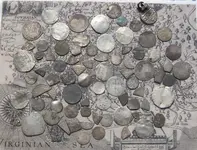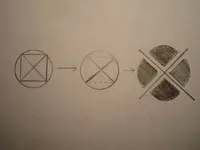RELICDUDE07 said:
I think in the old days 1700s,someone would have that coin , and cut and spend as needed,Say some food for a day,cut one outter edge..Maybe something to drink that night,cut another piece of the edge . Before you know it all they had was the middle square.The next day it was time to spend some more ,start cutting the pie shapes and so on..That one coin may have kept that dum dum alive for a week or two..
Relicdude,
I think the issue here is not that the coins were cut--but exactly how they were cut. I'd never heard of a coin being cut like that, but when I looked I
had one in my possession that was. 
I agree that the type of cut as outlined on the 2 Reales piece at top makes more sense than cutting a pie-shaped piece...If you want to cut a quarter of the value of the coin, you then end up with Two pieces left over to try and keep up with after you've paid. Only trouble is, the cut just doesn't look like the pieces would be "of weight." As can be seen in the article that Don provided above, early settlers here--and abroad evidently--melted down most of the pistareens because they were 83% silver instead of 93% like the Spanish Colony coins of South and Central America. So the weight/content of silver was highly important. If your buddy found some of these cut like this, I'd like to see them eventually--and try to tease out an explaination from the evidence at hand... Most of the ones I've ever seen were cut in pie-shaped wedges (halves, and quarters, and for the 8-Reales, eighths). I would imagine that a merchant might think twice about accepting an unfamiliar style of "cut" piece without weighing it first.
Just my thoughts...
And to Don...
I have started reading the article you posted in the link above.
As a side note to this thread, it is becoming increasingly apparent to me how the course of events in the Colonies was the result of economic and political pressures of the Empires (Spain, France, and England).
The Seven Years' War--and its role in shaping a sense of identity in the colonies, the debt accrued by England as a result of this war, and its subsequent taxes on the colonies in an attempt to "recover" its losses (over 150 million pounds--which would be tens of Trillions of dollars today!), the French taking the side of America in the Revolution as a way to help fight their old foe, England.(The French fleet was in the harbor when Cornwallis surrendered at Yorktown.) And of course the French Revolution on the heels of our own Revolution...
It seems that Wars had a great deal to do with other events--and shaping history--even long after they were over. This is something that is perhaps worth considering.
And the article above puts some other economic pressures in perspective--like how Spain's debt from war affected the fate of the Pistareen as a "debased" currency, and how currency was kept sparse in the colonies by England in order to keep us dependent on them--and keep us trading Tobacco as a form of money. Societal pressure evidently played a role as well--since folks who carried a large amount of silver coin could be prosecuted as pirates and have their assets confiscated and sent to the Crown.
It's all
fascinating. Thanks for the article, Don! I'm starting the part about "cut" coins now...
-Buckleboy









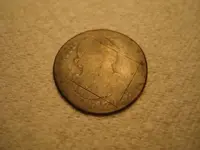
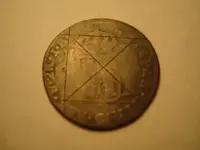


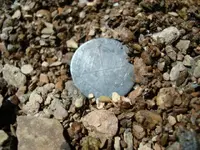
 ?? Truly amazing find my friend!!!!!!!!!!!!!!!! Dan
?? Truly amazing find my friend!!!!!!!!!!!!!!!! Dan